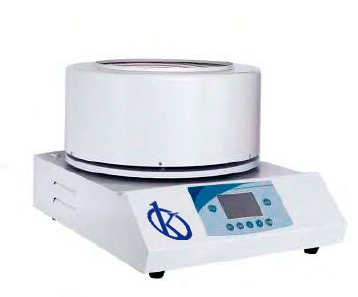Heating blankets and water baths are laboratory equipment used in different areas and each one has its own distinctive characteristics and applications, which we will explain below.
Heating blankets are devices that are used in order to maintain a stable temperature determined for a specific process. Its design makes the transfer effective thanks to the uniform temperature distribution throughout the area in contact with the container and the materials with which it is made. They are the best option for the user due to their rapid heating and thermal response.
This laboratory equipment is made of stainless steel and CR steel and is also provided with an electrostatic paint coating. It has a heating element covered with fiberglass with a high thermal resistance. Additionally, it has rods for holding the glass parts with a height of 50 cm.
What are the characteristics of the heating blanket?
The heating blanket is an equipment used for various processes, among which can be mentioned, soxhlet extraction, kjeldahl, boiling and distillation among many others. They can be found in different volumes, these being from 100 ml to 3000 ml. They are equipped with analog control or also come with a PID type digital control.
How do heating blankets work?
These devices work under the principle of heat transfer by conduction. The increase in temperature of the fluid is efficiently achieved through the metal wall of the container. The materials are one of its main characteristics, since the interior is made with insulating elements of silicone and resins that favor the flow of heat (thermal conductivity) towards the container and not towards the outside of the blanket. In this way, heat loss with the surrounding environment is avoided and at the same time safer on contact for handling. Likewise, it has a regulation and control system to optimize the efficiency of the process and prolong the life of the electrical resistance.
What is a water bath?
The water bath is a piece of equipment used in the laboratory to perform serological tests and incubation, agglutination, inactivation, biomedical, pharmaceutical and even industrial procedures. They are generally used with water, but they can also be used with oil. The temperature ranges in which they are normally used are between room temperature and 60 ° C. The water baths are manufactured with chambers whose capacity can be selected between 2 and 30 liters.
What is the principle of operation of a water bath?
The water baths consist of a tank made of stainless material, which has a set of electrical resistances mounted at the bottom of it, through which heat is transferred to a medium such as water or oil, which is kept at a temperature preselected through a control device – thermocouple, thermostat, thermistor or similar – that allows selecting the temperature required for the various types of analysis or tests. It has an external body where the aforementioned controls are located, which is made of steel and is generally covered with electrostatic paint with high adhesion and resistance to the environmental conditions typical of a laboratory.
At Kalstein we are MANUFACTURERS of laboratory equipment and that is why we offer you excellent heating blankets and water baths at the best PRICES on the market. That is why we invite you to take a look HERE

